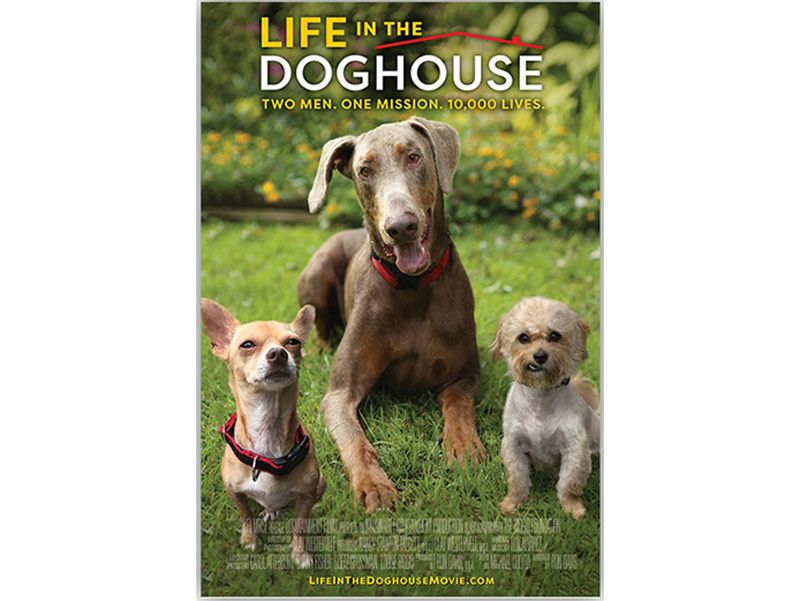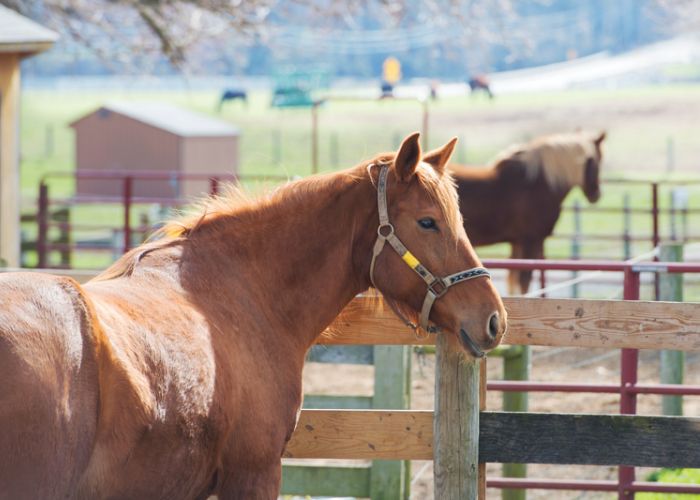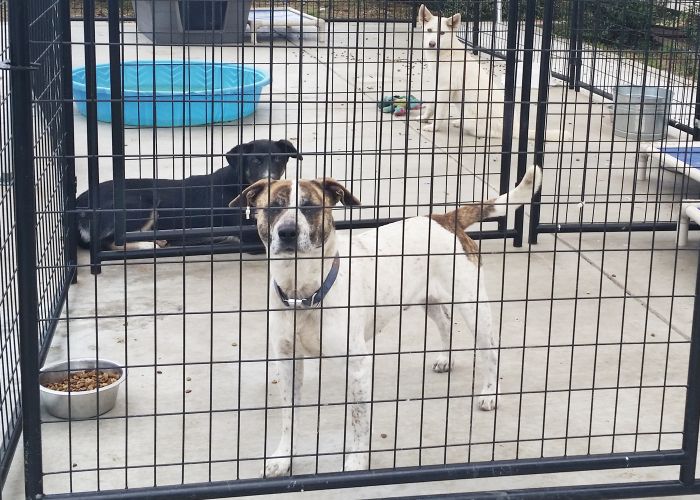A tale of ordinary to extraordinary
This pair rescued a few dogs and went on to help more than 1,000

When filmmaker Ron Davis wanted to adopt his second dog, he was finishing up his documentary Harry & Snowman (about a plow horse who was rescued from slaughter) and surrounded by members of the horse community, who naturally told him to go to two horse trainers, Danny Robertshaw and Ron Danta. So he visited the couple at Danny and Ron’s Rescue in South Carolina, where they care for as many as 100 dogs at one time in a sprawling ranch-style house on their farm. Right away, says Davis, he knew he had found not only a place to adopt a dog, but a documentary subject. “I went into their house and met them and met the dogs, and I think it was maybe 20 minutes into it I knew that this was going to be my next film.”
“I went into their house and met them and met the dogs, and I think it was maybe 20 minutes into it I knew that this was going to be my next film.”
—Ron Davis, Filmmaker
The result is Life in the Doghouse, which played in theaters this fall and tells the couple’s story while also shining a light on the cruelties of puppy mills. Davis says he will donate all proceeds to animal rescues.
In this edited interview with Humane Society of the United States’ senior writer Karen E. Lange, the reluctant stars of the film talk about how two self-described ordinary people have managed to rescue more than 10,000 dogs since 2005.
What was your initial reaction when Ron told you he wanted to make a film about your rescue?
Danny: My biggest comment was, “Well, this is going to be real interesting—how many times are they going to watch us feed the dogs?” I just couldn’t see beyond that. And, of course, as we’ve gotten into it and have been seeing the end result, it’s truly amazing.
From the very first showing of the movie, I can’t tell you how many people came up to me and said something like, “I had no idea. I’ve heard the words ‘puppy mill’ all my life and I’ve used the term, but I had no idea what they really were. I had no idea the lack of care they get and the bad conditions. ‘Puppy mill’ just sounded like a fun place.” There’s so much education in the film. Any bit of it that someone can take away is going to be more than they came with.

What are you hoping people learn from the movie?
Ron: We are very big preachers of the importance of spay and neuter, because obviously we have an overpopulation of dogs. Millions of animals die in shelters each year. That’s pretty sad. I don’t have any problem at all if somebody loves golden retrievers and they go to a great breeder and buy a golden retriever.
But the problem is people think when they go to pet stores that they are buying dogs from good breeders. Ninety-ninepoint- nine percent of all dogs in pet stores come from puppy mills. A good breeder would never let their puppies go to a pet store. People say so many times, “I went to the pet store and I felt so sorry for this puppy, so I bought it.” They don’t realize by buying that dog that keeps puppy mills going. If people stop buying in pet stores, it will eventually shut puppy mills down.
How did your small-scale efforts to rescue dogs grow into what you are doing today?
Ron: Danny and I are just basically very average people. When we began, Danny and I would go to our local shelter, pull three or four dogs and take them back to the farm, socialize them some and then take them to a horse show and try to find friends to adopt them. When [Hurricane] Katrina hit, that’s when we took in mass quantities of dogs, and we were not a 501(c)(3) nonprofit. We were spending all of our retirement funds. An attorney in Michigan offered pro bono to make us a nonprofit.
We never dreamed that the house would be turned over to the dogs. It just kept evolving. Looking back, I sometimes wonder how we got this deep into it. But there’s no way I could stop. Being overwhelmed and exhausted, that’s probably seven days a week, 365 days a year. Danny and I have both gotten older. It is very tiring. In the morning we get up and feed 78 dogs, medicate them all, go to work, train horses and then come home and have to put all the dogs to bed.
What keeps you going?
Ron: I guess the thing that drives me forward is these dogs are going to loving forever homes. I just keep focusing on, “This is great, another dog got a home today.”
Danny: After Hurricane Katrina, we thought about our own dogs, and what if all of a sudden they ended up somewhere they never dreamed of being, in a dark place and sitting in their feces and all the barking, hot and sweaty, and just horrible conditions like what happened in New Orleans. They don’t know what’s going on. ... Our biggest thing was to think about the dogs who had had homes, who had had happiness. It was the ones who had known love who just freaked me out.







